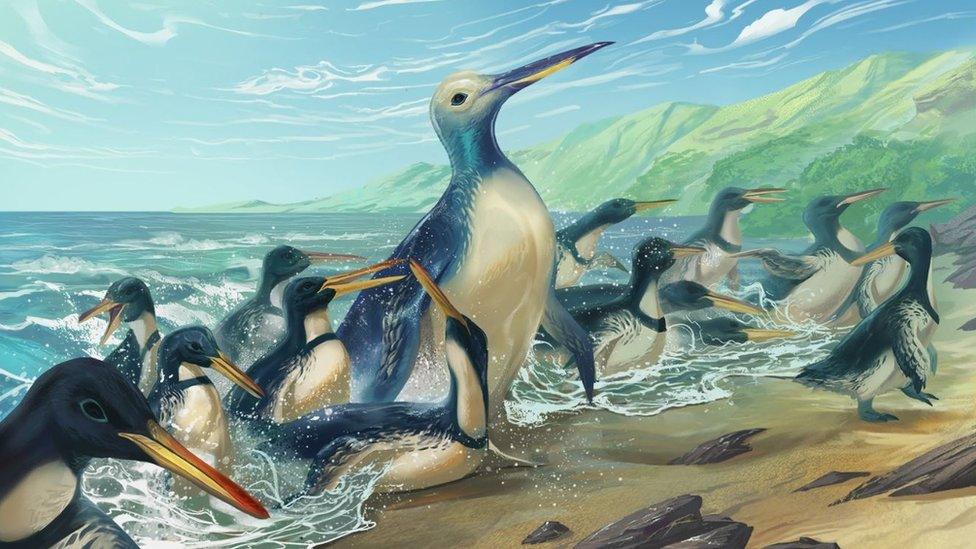Extraordinary new fossils over 460 million years old found in Wales
- Published
- comments
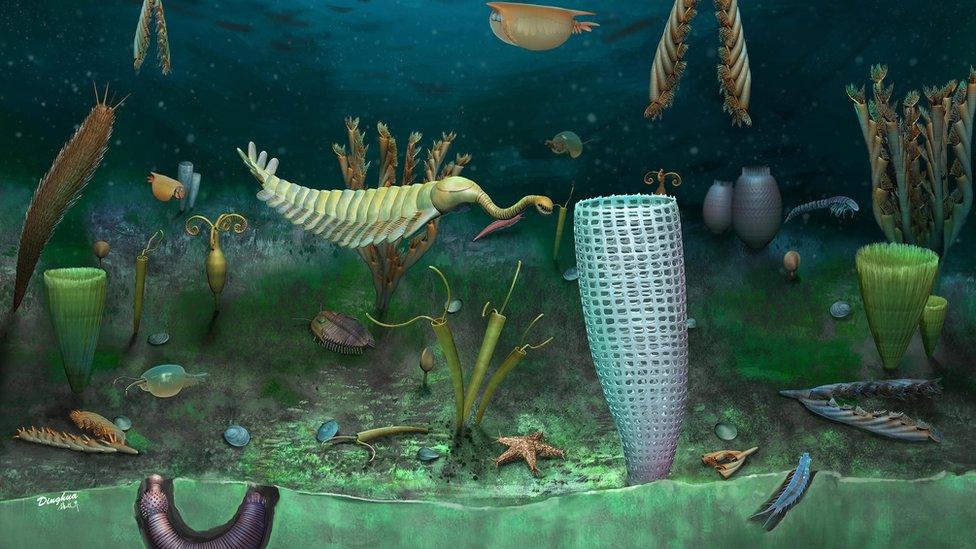
Many rare fossils, including soft-bodied creatures, were found at Castle Bank
One of the world's most important fossil deposits has been found in Wales, according to experts.
Researchers from Museum Wales discovered large number of new fossils from more than 460 million years ago near Llandrindod Wells, Powys.
Over 170 species, including rare soft-bodied animals, were found in rocks back in 2020 on private land known as Castle Bank.
It was a community effort too, as the researchers had to fundraise to buy the equipment needed to excavate them.
Why is this find so special?
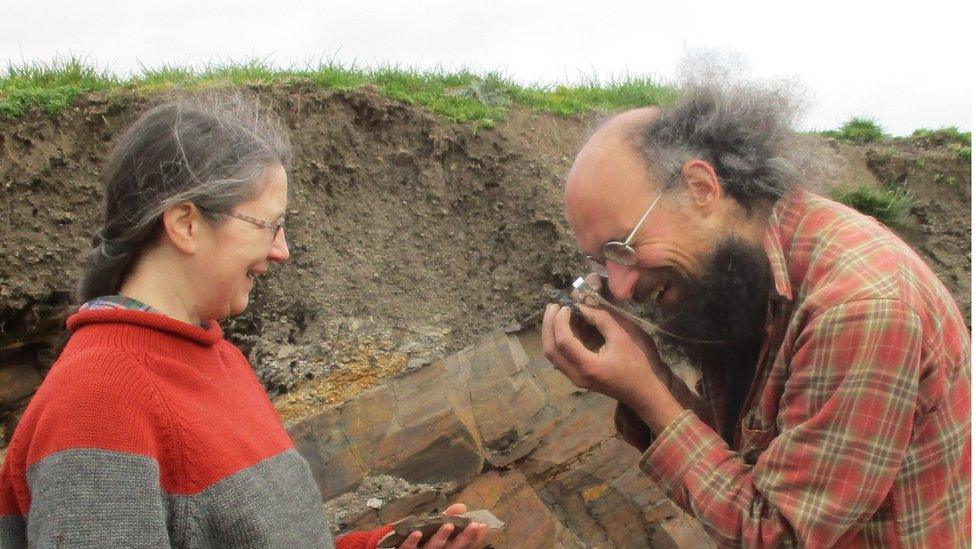
Lucy Muir and Joe Botting found the fossils at Castle Bank
Usually when you find a fossil, only the skeleton or a hard exoskeleton, like a shell, is preserved.
But at this new site in Powys, soft tissues and complete organisms have been preserved.
Although fossils like this have been found before, they've all been from the Cambrian Period.
These fossils found at Castle Bank dates from the Middle Ordovician period around 50 million years later.
The Cambrian period lasted more than 53 million years. It started around 538 million years ago!
Then around 470 million years ago, the Ordovician period started and lasted over 41 million years.
Both of these periods occurred during the Palaeozoic Era.
Only one other Ordovician site had been found, at the Fezouata Biota of Morocco.
Researchers Dr Joseph Botting and Dr Lucy Muir say their discovery is super important because it shows them new information about how life was evolving at this time.
Dr Muir said: "It coincides with the 'Great Ordovician Biodiversification Event', when animals with hard skeletons were evolving rapidly.
"For the first time, we will be able to see what the rest of the ecosystem was doing as well."
What fossils did they find?
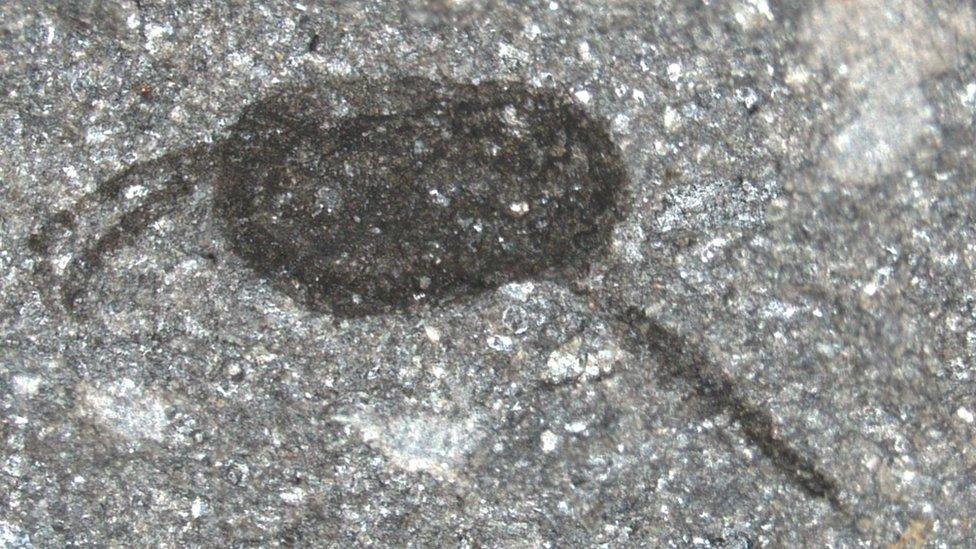
It might look a bit like spilt water on a rock...but this is actually a new species of tiny bivalved arthropod!
Most of the animals found at Castle Bank were quite small - between 1mm and 5mm.
Old examples of some modern-looking animals were found there too - including a creature that looks almost like an insect and might even be distantly related to them!
The new fossils also include many different types of worms, sponges, barnacles, starfish and a primitive horseshoe crab.
When researchers have looked at the fossils under the microscope they've been able to see an amazing amount of detail including eyes, possible brains and tentacles.
It was a community effort
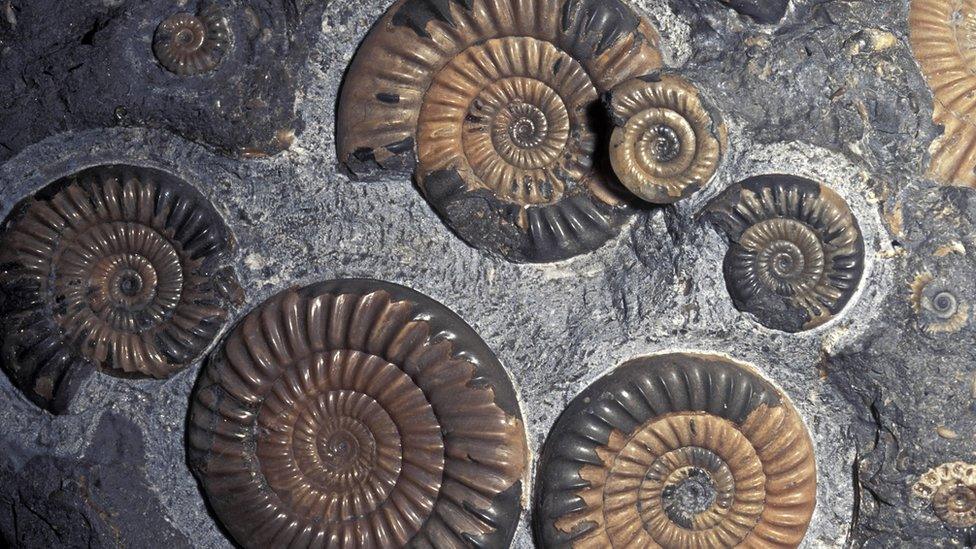
When we think of fossils, we usually think of the skeletons and hard shells that are preserved like these. But the new find in Wales also has examples of many soft-bodied creatures
Dr Botting and Dr Muir had to crowd-fund to be able to buy microscope equipment to help them with their work.
Collecting tiny fossils like this is a very tricky task too. The pair spent over 100 days collecting them and are now working with scientists from around the world to examine the finds.
Dr Botting said: "Every time we go back, we find something new, and sometimes it's something truly extraordinary.
"There are a lot of unanswered questions, and this site is going to keep producing new discoveries for decades. This is just the beginning, and we're excited to see what comes next."
- Published23 March 2023
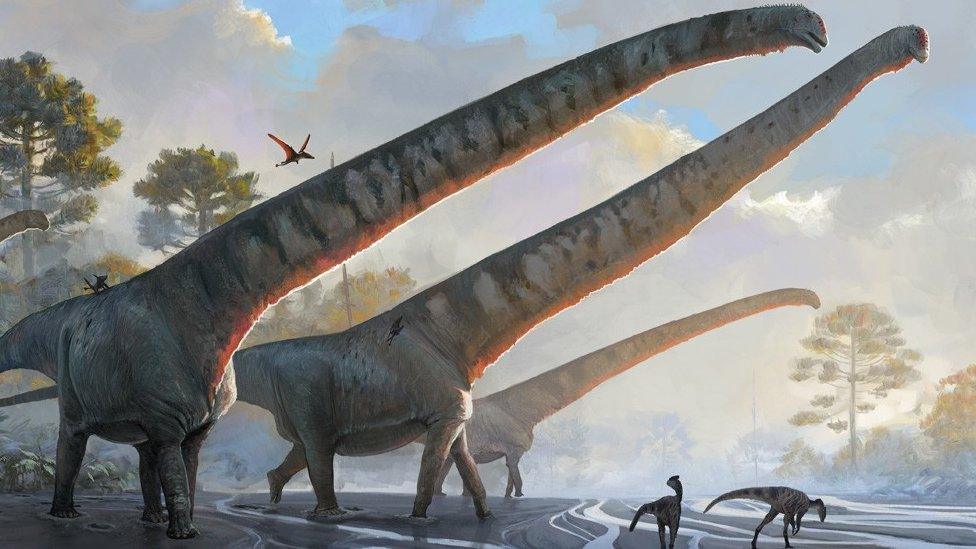
- Published19 March 2023
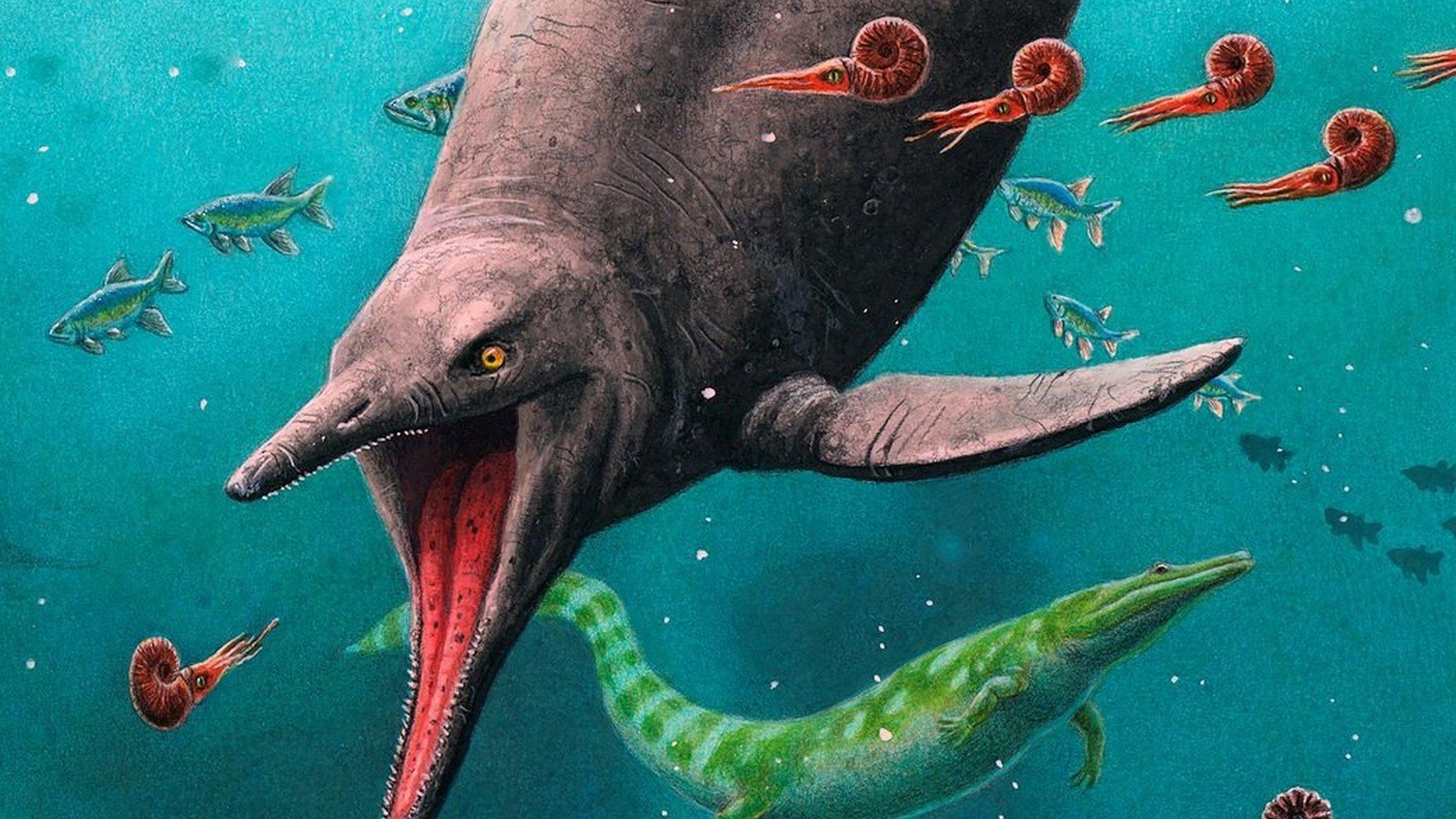
- Published12 February 2023
